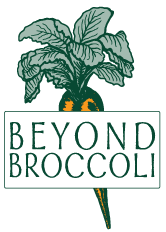Back in Jackson, Wyoming, and my dream job – Beyond Broccoli Nutrition Counseling and Education. There is so much to share with you from my four plus years in the Seattle area. Luckily I don’t need to squeeze it all into one blog post so I’ll begin by sharing some of the highlights.
First, as many of you know, eating more whole and minimally processed foods to improve our health is part of my nutrition philosophy and approach. The endless stream of dietary fads pushes me more firmly towards simplifying what we eat, taking back control over preparing more of our food at home, learning to make nourishing foods taste delicious, finding ways to eat well amidst our often insanely busy schedules, learning to wade through the marketing hype that awaits us on nearly every grocery store shelf, and finally, creating sustainable daily habits that support our health and well-being. So, teaching at Bastyr University the past four years was an incredible experience.
I was thrilled to be part of a nutrition department that shares my holistic views related to the importance of whole foods and an integrative approach to helping people improve their health. Bastyr began as a school for naturopathic physicians and expanded to include herbal science, acupuncture and oriental medicine, midwifery, and many options that combine nutrition with exercise and sports science, culinary arts, and clinical healthy psychology. So my students had a variety of interests and most were eager to change the status quo in the fields of nutrition and health care.
Over the past four years I encouraged my students in a variety of classes to rise up to the challenge of changing our broken or too often inadequate food and healthcare systems, and to expand the increasingly narrow view of nutrition and health that underlie these systems. In my cultural foods classes students explored the important role that culture plays in determining what, when, why, how, where, and how much we eat. My Food & Society class delved even deeper into the subject of what shapes and determines our eating habits, with forays into the mismatch of human biology and our current food environment; food psychology that can interfere with our best intentions to eat intuitively and mindfully; food politics that influence many aspects of our food system including nutrition recommendations and education; and the many elements of our industrialized, globalized food system that makes the idea of sweeping changes daunting.
In all of my classes I found opportunities to challenge my students to think beyond simply telling people what to do, whether they are working with individual patients or clients to change lifestyle behaviors, or trying to reach a class, audience, or readership about changes that need to happen within our food system. Change is difficult and on all levels change requires a mix of collaboration and motivation – or in my ideal scenario, inspiration!
This brings me to another core belief: eating is one of the basic human needs that connects us all, and I believe it should be enjoyable, especially for those of us fortunate enough to have an adequate, consistent supply of food. Sadly, too many people currently make food choices based on fear, or beat themselves up for not making changes they “should” make. We are bombarded with messages suggesting there is some perfect way to eat to insure optimal health, and worse, that there is one path to health (and it’s lined with kale!).
My work over the past two years at an intensive outpatient clinic for eating disorders was a stark reminder of what can happen when we approach nutrition narrowly defining health in terms of weight, rigidly adhering to generally prescribed rules of eating, and accept our modern culture’s preoccupation with outward appearance as paramount to success in life. The lessons I taught my students about change applied in the clinical setting as well. My goal was to engage my patients and to collaborate with them, and support them through the long, difficult process of trading their eating disorder for genuine and sustainable self-care. Of course being part of an amazing multi-disciplinary team of medical, nutrition, and mental health professionals all working with our patients toward common goals, was incredibly helpful for our patients and satisfying for me.
So I return to Beyond Broccoli more determined than ever to help my clients and patients find what will help them reach their nutrition and health-related goals, and to support them in the pro
cess of making changes in ways that are individualized, effective, realistic, and of course sustainable for the long-term. I continue to get fired up about using creative ideas and experiential learning techniques when possible, like cooking, grocery shopping, and whatever else my clients need in terms of skills and ideas. I still believe amidst the hard work of changing nutrition and other habits we can have some fun. I look forward to sharing more of what I have learned with all of you, here in Wyoming and beyond, and to hearing from you!



